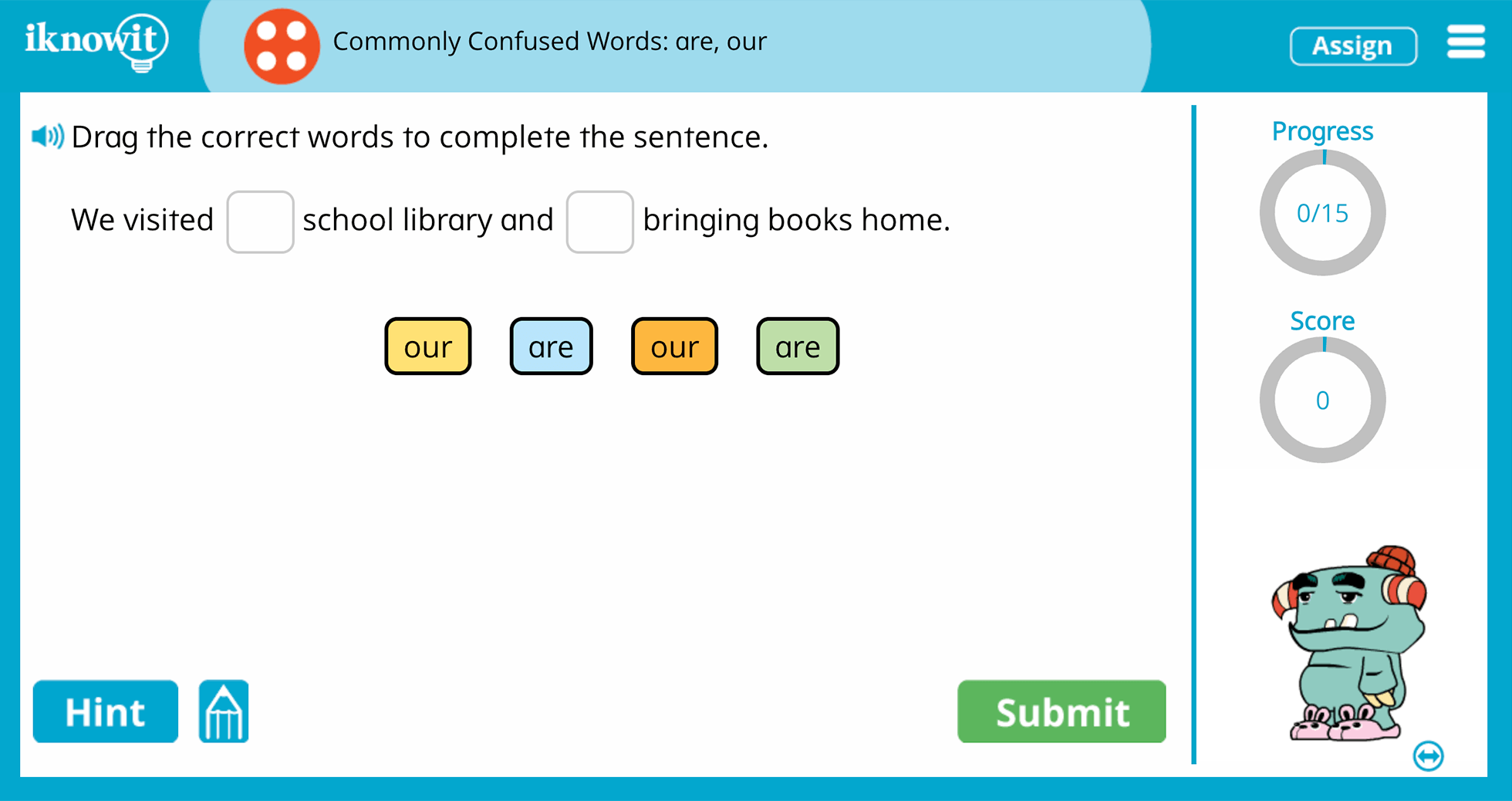




In 4th-grade English Language Arts (ELA), students encounter commonly confused words such as "are" and "our." These words have similar spellings or pronunciations but different meanings, leading to confusion in writing and communication. Understanding commonly confused words is essential for young learners as it improves their writing accuracy, enhances their vocabulary, and promotes clarity in communication. Mastery of commonly confused words enables 4th-grade students to express themselves effectively in writing, demonstrating a deeper understanding of language nuances and word usage. Identifying and using commonly confused words correctly in sentences fosters clear and precise communication, which are crucial skills for academic success and effective written expression.


Educators employ various strategies to teach commonly confused words such as "are" and "our" effectively in the 4th-grade classroom. Interactive lessons that incorporate visual aids, such as word charts or sentence examples, help students differentiate between these words and understand their meanings. Engaging activities, such as word sorting games or sentence completion exercises, provide hands-on practice and reinforce learning. Teachers can also use mnemonic devices or word association techniques to help students remember the differences between commonly confused words. For example, creating a visual mnemonic like "R in are stands for 'they are' while O in our stands for 'belonging to us'" can aid memory retention. By providing a mix of interactive, hands-on, and mnemonic-based learning experiences, educators ensure that 4th-grade students develop a solid understanding of commonly confused words.
iKnowIt.com offers an online platform for 4th-grade students to practice and reinforce their understanding of commonly confused words such as "are" and "our" in an interactive and engaging way. Through a variety of interactive games and exercises, students can explore these words' meanings and usage and enhance their skills. The platform provides a range of activities designed to cater to different learning preferences and abilities, such as word usage quizzes and interactive lessons focused on commonly confused words. With immediate feedback and progress tracking features, students can monitor their performance and track their improvement over time. iKnowIt.com's interactive learning approach ensures that 4th-grade students cultivate a strong grasp of commonly confused words while enjoying an enriching educational experience.


This interactive ELA lesson is categorized as Level D. It may be best suited for 4th grade students.
L.4.1G
Language
Conventions of Standard English
Correctly use frequently confused words (e.g., to, too, two; there, their).*
Commonly Confused Words: saw, seen (Level D)
Work with the words saw and seen to determine when each should be used properly.
Commonly Comfused Words: then, than (Level D)
Practice using the words then and than to learn when it's correct to use each in a sentence.